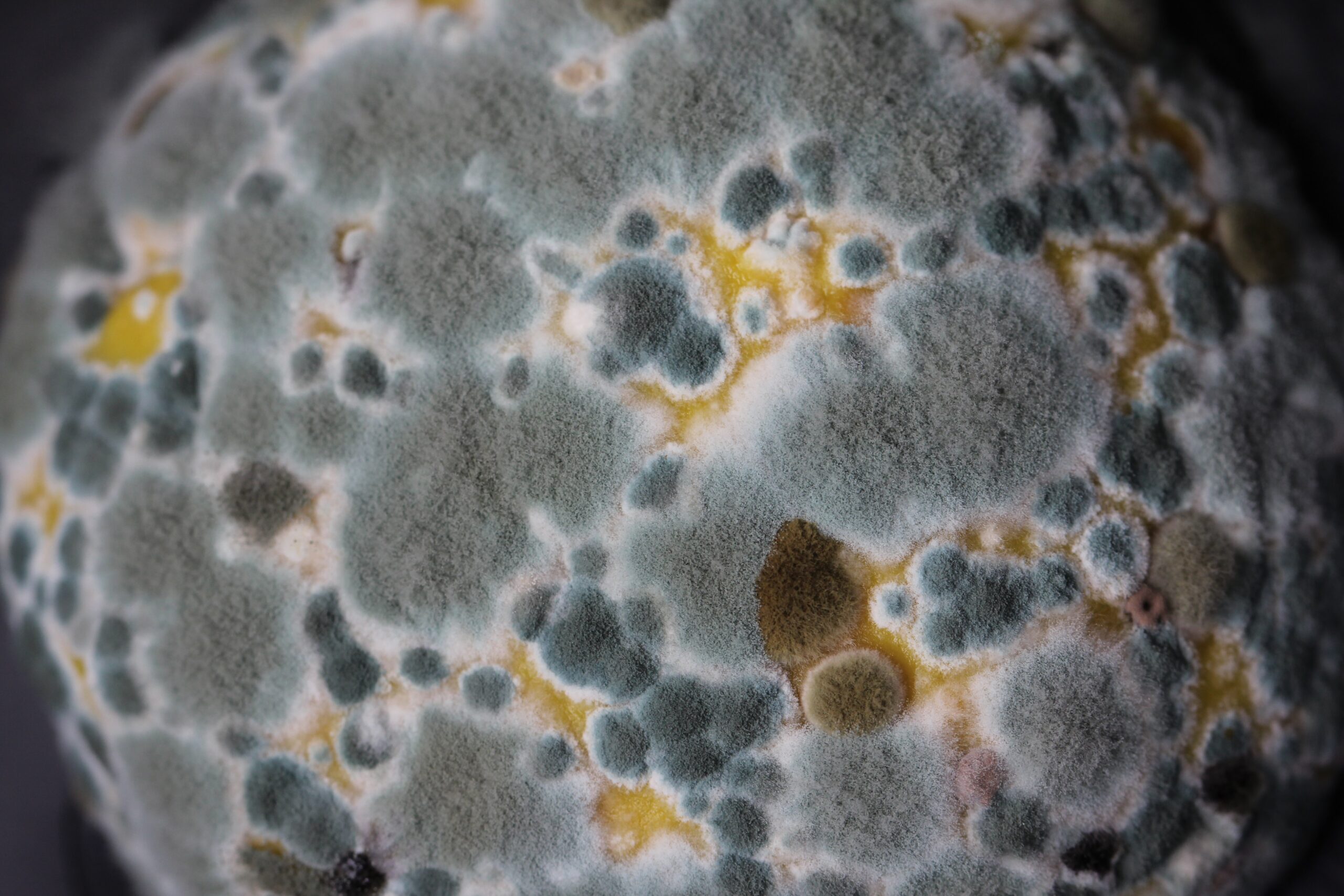Oh, no, you found mold! But what kind of mold? After all, there are hundreds (actually, thousands) of different species of mold. While this sounds overwhelming, the good news is that there’s only a handful of common ones you’ll find in your home. This is good because since your mold remediation technician deals with them often, they will also know how to treat them.
Keep reading to learn more about the most common types of household mold you may encounter.
Aspergillus
First up is Aspergillus – also known as Aspergillus fumigatus.
This household mold is most commonly found in your kitchen because it usually grows on old food and even on spices. However, keep in mind it’s not always limited to your kitchen.
Aspergillus can also be found on dead, decaying leaves outside, so anything you track into the house brings the spores indoors. Like other mold allergy symptoms, people allergic to this fungus may experience a fever, difficulty breathing, and in severe cases, a bloody or phlegmy cough.
Stachybotrys Chartarum
In other words: black mold. Black mold is probably the most well-known type of household mold. It’s typically found in dark, damp, humid places throughout the home such as basements, attics, and crawl spaces.
And it’s called black mold because of its color. When it grows and develops, you can easily identify black mold by its dark black coloring. While other molds may be black, they tend to be more gray or green in color.
If you’re curious as to whether or not your home has mold, look out for certain physical symptoms like headaches or chronic fatigue. If you or a member of your family can’t shake their exhaustion, it’s time to call in the mold remediation professionals to conduct a black mold inspection.
Cladosporium
Last but not least, there’s Cladosporium. This particular type of mold grows both indoors and out, making it easy to track in because of how airborne it is. Generally speaking, this type of mold grows easily after water exposure.
Though all mold likes moisture and humidity, Cladosporium especially craves it. So, if your washer overflows or there’s a leak in the ceiling, take care of it right away. Letting water sit for even a few hours after a water leak could mean the development of Cladosporium. And considering that it can develop in as little as 24 hours, there’s no benefit in waiting around.
Why Call a Mold Remediation Specialist?
One call to your mold remediation team is all it takes to kill mold at the source. Trying to clean it yourself isn’t always easy. And to make matters worse, it doesn’t always treat mold at the source. Rather, it just puts a bandaid on it.
But with a professional, you can kill it at the source so it doesn’t come back.
Have Mold? Let the Mold Remediation Pros at California Steam Clean Get Rid Of It
Though mold is intimidating to find and even more overwhelming to deal with, you don’t have to continue living with it. All you have to do is contact a professional mold remediation company like California Steam Clean.
We have the tools, cleaning solutions, and experience to treat all the types of mold mentioned here, plus many others. If you have mold, there’s no one better to call than California Steam Clean. We are your go-to source for all your local mold remediation needs.




